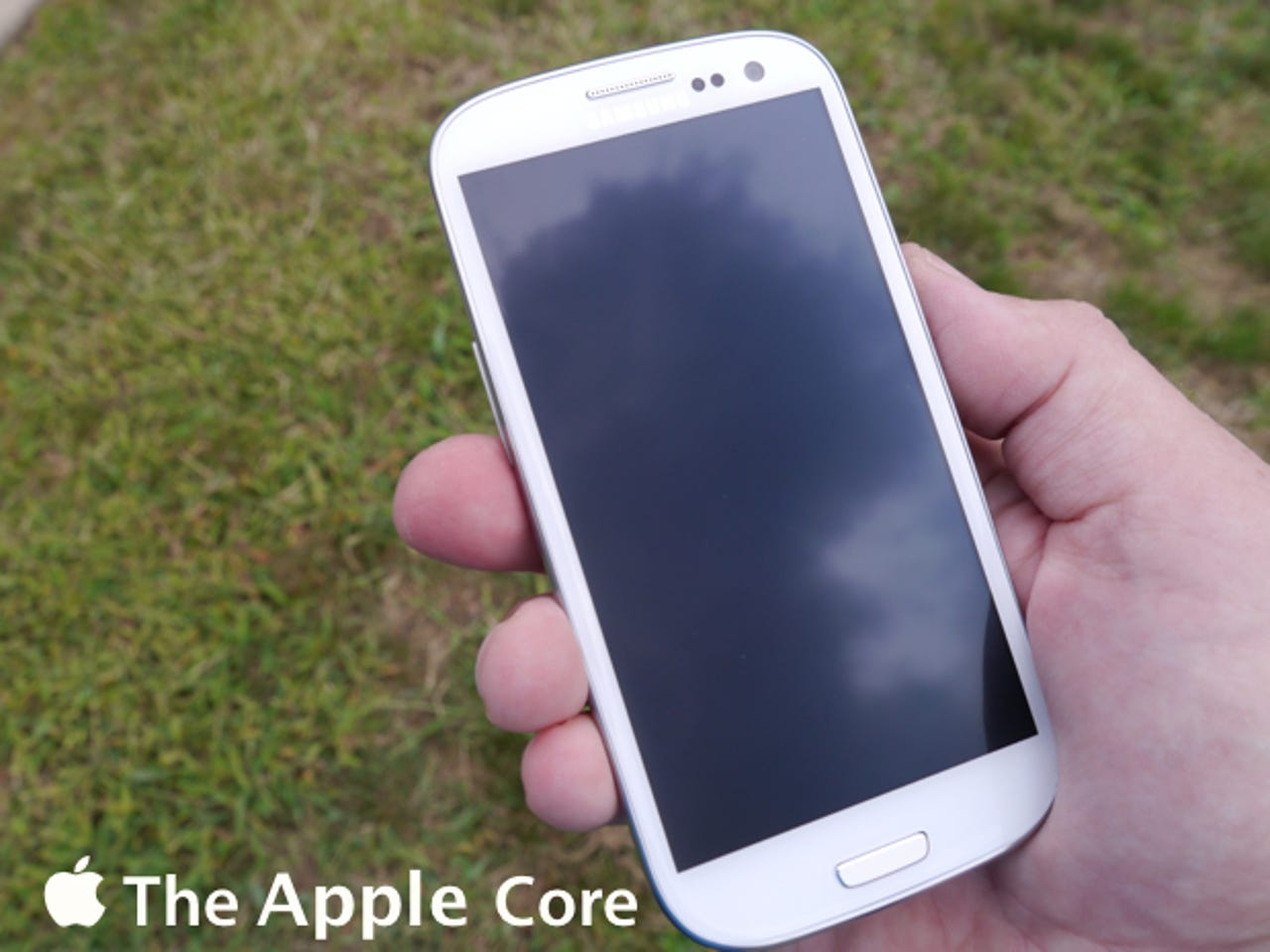What Apple should copy from the Samsung Galaxy SIII


The Samsung Galaxy SIII is a great smartphone and, in a lot of ways, it's better than the iPhone 4S.
In the Fall of 2011 Apple released the evolutionary iPhone 4S instead of coming out with a revolutionary iPhone 5. Yawn. Sure, it comes with a faster chip and Siri, but it uses the same form factor and screen size as the iPhone 4 which came out a year earlier.
Apple rested on its laurels and Samsung caught the iPhone flat-footed. (Let's set aside for a moment the current Apple Samsung litigation and focus on the hardware).
While many people were surprised when the iPhone 5 didn't come out in the Fall of 2011, Apple was repeating history. In the 2008 it released the iPhone 3 then a year later in 2009 it released the iPhone 3GS in the same form-factor. Some refer to this as the the "tick-tock" release cycle. Apple's current rhythm is to release a new form-factor one year (tick), then release a new iteration of the same form factor with upgraded internals 12 months later (tock).
While Apple sat on the sidelines for a whole year (a lifetime in techbology) with the same, tired iPhone design other phone makers took chances and came out with new designs. Apple used to be the one taking the chances, but since it became the market leader the innovation seems to be slowing.
I've been testing a Samsung GS3 (a.k.a. SCH-1535) on Verizon Wireless ($199 w/2 year contract) and it's an incredibly nice device. It dwarfs the iPhone 4S in physical size, but the GS3's design aesthetic makes the iPhone look like Johhny Ive took an extended holiday.
The aging iPhone 4 is an industrial-looking block of metal and glass. When the first pictures of the iPhone 4 leaked, I was certain it was an unfinished prototype or engineering mule that lacked an outer bezel. The GS3 by comparison is smooth and curvy and feels great in the hand. The iPhone feels kind of like an ice scraper or something you might use to remove wallpaper with (and it doesn't age well, the aluminum bezel looks like junk after a while).
PROS
The GX3 has great form factor, a large 4.8-inch display, blazing-fast LTE speed, an NFC chip, and Android can do things that iOS still can't (widgets, Swype, Hooha, CyanogenMod 10, etc.). I've become completely enamored with Verizon Wireless' wicked-fast 4G/LTE network since they lit up a new LTE tower about 10 miles from my house (your mileage may vary).
CONS
It's biggest problem is that the GX3 doesn't run Android 4.1 (Jelly Bean). Our own James Kendrick nailed it, the GS3 should have shipped with Jellybean, not the outdated Android 4.0 (Ice Cream Sandwich). Rumors persist that Jelly Bean will come to the GX3 as soon as tomorrow (this video shows it in action) but I'll believe it when I get the push notification. Another big detraction on the GX3 is the Samsung TouchWiz skin which runs atop Android 4.0. OEMs need to immediately stop skinning Android or, at a mimimum, provide a setting to "revert to stock Android." Enough already, I hate all Android skins.
Granted, square versus curvy is a subjective opinion but it's more than that. The iPhone 4/4S' physical design hasn't changed in two years and it's really starting to show its age. What's really scary is from the hardware leaks it looks like the iPhone 5 will arrive in essentially the same iPhone 4/4S "ice scraper" form factor, only taller. Sheesh.
I know that the iPhone is the market leader and that Apple is the world's most valuable company and everything, but it needs to stop with the "year off" nonsense. Apple needs to update the iPhone hardware design every year to keep it current and fresh. More than that, Apple needs to pay closer attention to what users want and -- more importantly --what the competition is doing.
Further reading: